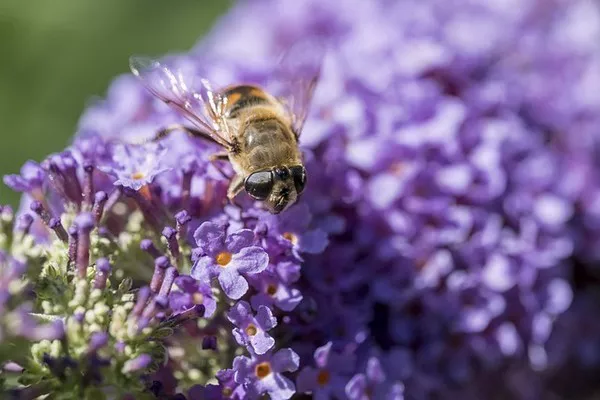In the world of flowers, each bloom carries its own unique language, a secret code of symbolism and meaning that transcends linguistic barriers. One such enchanting blossom that has captured the hearts of many with its delightful fragrance and delicate appearance is the lilac. Delving into the flower language of lilac unveils a tapestry of emotions, sentiments, and connections that have been woven throughout history and across cultures. In this comprehensive exploration, we will unravel the profound meanings behind the lilac and discover why this captivating flower continues to hold a special place in the hearts of admirers around the world.
The Blooming Beauty of Lilac
Before we embark on a journey through the language of lilac, it is essential to appreciate the physical beauty and characteristics of this alluring flower. The lilac, scientifically known as Syringa vulgaris, is a member of the olive family and native to Southeast Europe. With its clusters of fragrant, tubular flowers adorning elegant, woody stems, the lilac captures attention with its charm and grace.
The color palette of lilacs is diverse, ranging from enchanting shades of purple and lavender to pristine white. Each hue carries its own unique significance and adds depth to the flower’s symbolism. As lilacs bloom in the spring, they symbolize renewal and the promise of new beginnings. Their ephemeral beauty serves as a reminder to cherish the fleeting moments of life and embrace change with grace.
The Language of Lilac through History and Culture
The lilac’s language of symbolism has deep historical roots, dating back to ancient civilizations. In Greek mythology, the lilac is associated with Pan, the god of forests and fields. As a result, the lilac became a symbol of protection and the celebration of the rustic beauty of nature. In Persia, the lilac is revered as a token of love and is often associated with youthful innocence.
Throughout the ages, the lilac has been associated with different meanings and emotions. In Victorian England, when the language of flowers was a popular form of non-verbal communication, the lilac symbolized the first emotions of love. It was often used to convey the message, “Do you still love me?” The delicate and fragrant blossoms of lilac were exchanged as tokens of affection and endearment, allowing individuals to express their sentiments without uttering a single word.
Lilac Varieties and Their Symbolism
The lilac family boasts a rich array of varieties, each with its own unique characteristics and symbolic meanings. Understanding the significance of different lilac colors and types can enrich our appreciation for these blossoms and help us express our emotions effectively.
Purple Lilacs: The most common variety, purple lilacs represent the first emotions of love and are often associated with romance and passion. These deep purple blooms symbolize youthful love and the excitement of new relationships.
White Lilacs: White lilacs exude purity, innocence, and humility. They symbolize purity of intentions and are often used in weddings and ceremonies to signify the couple’s commitment to a pure and sacred union.
Lavender Lilacs: Lavender lilacs embody elegance and grace. Their soft, muted hue conveys a sense of refinement and sophistication, making them a popular choice for formal occasions.
Blue Lilacs: Blue lilacs are a symbol of tranquility and inner peace. They represent serenity and are often given to individuals who are going through challenging times to provide comfort and solace.
Pink Lilacs: Pink lilacs represent love and affection, but in a gentler and more delicate way than purple lilacs. They convey a sense of admiration and appreciation for the recipient.
The Language of Lilac in Modern Times
In today’s fast-paced world, the language of flowers may seem like a lost art. However, the lilac’s timeless symbolism continues to find its place in contemporary culture. Lilacs remain a popular choice for wedding bouquets and decorations, symbolizing the purity and beauty of love. They are often gifted on anniversaries and special occasions to express enduring affection and appreciation.
Moreover, the therapeutic properties of lilac have not gone unnoticed. Lilac essential oils and fragrances are used in aromatherapy to promote relaxation, reduce stress, and uplift the mood. The calming scent of lilac is believed to soothe the mind and rejuvenate the spirit, making it a popular choice for personal care products and home fragrances.
Cultivating Lilacs and Preserving their Language
Cultivating lilacs can be a rewarding experience for both seasoned gardeners and beginners. These hardy shrubs require proper care and attention to thrive and bloom abundantly. Adequate sunlight, well-draining soil, and regular pruning are essential for the lilac’s health and longevity.
Preserving the language of lilac goes beyond nurturing the flowers in our gardens. It involves passing down the knowledge and appreciation of this enchanting blossom to future generations. Exploring the symbolism of lilacs with loved ones and incorporating them into special occasions can keep this floral language alive and relevant in our modern lives.
Conclusion:
The language of lilac is a beautiful tapestry of emotions and sentiments that transcends time and cultural boundaries. As we delve into the symbolism and meanings behind these captivating blooms, we discover a rich history of love, purity, and grace. From ancient mythology to contemporary culture, lilacs have held a special place in the hearts of people worldwide, offering comfort, joy, and beauty.
As we cultivate lilacs in our gardens and gift them to those we cherish, let us remember the profound language they carry. The lilac’s delicate beauty and ephemeral nature serve as a reminder to appreciate the fleeting moments of life and embrace change with grace. In doing so, we not only preserve the language of lilac but also enrich our lives with the profound symbolism that these enchanting blossoms carry.


